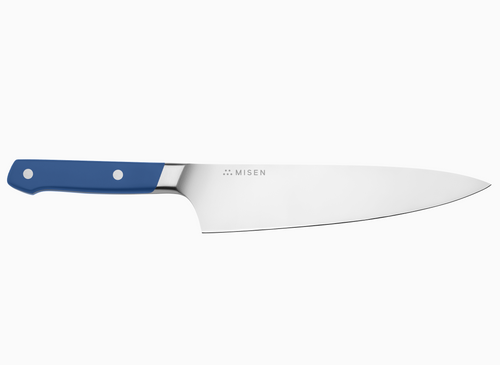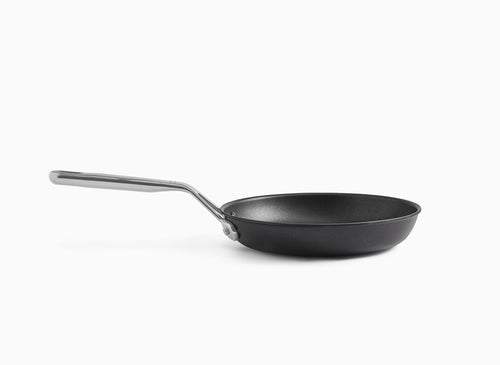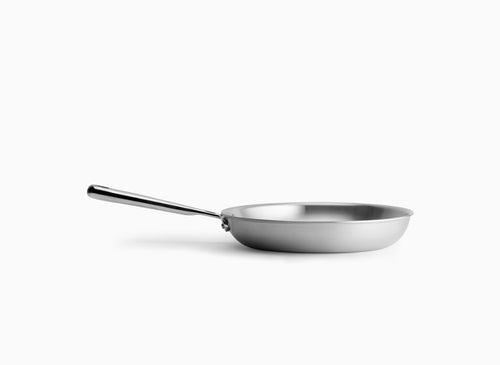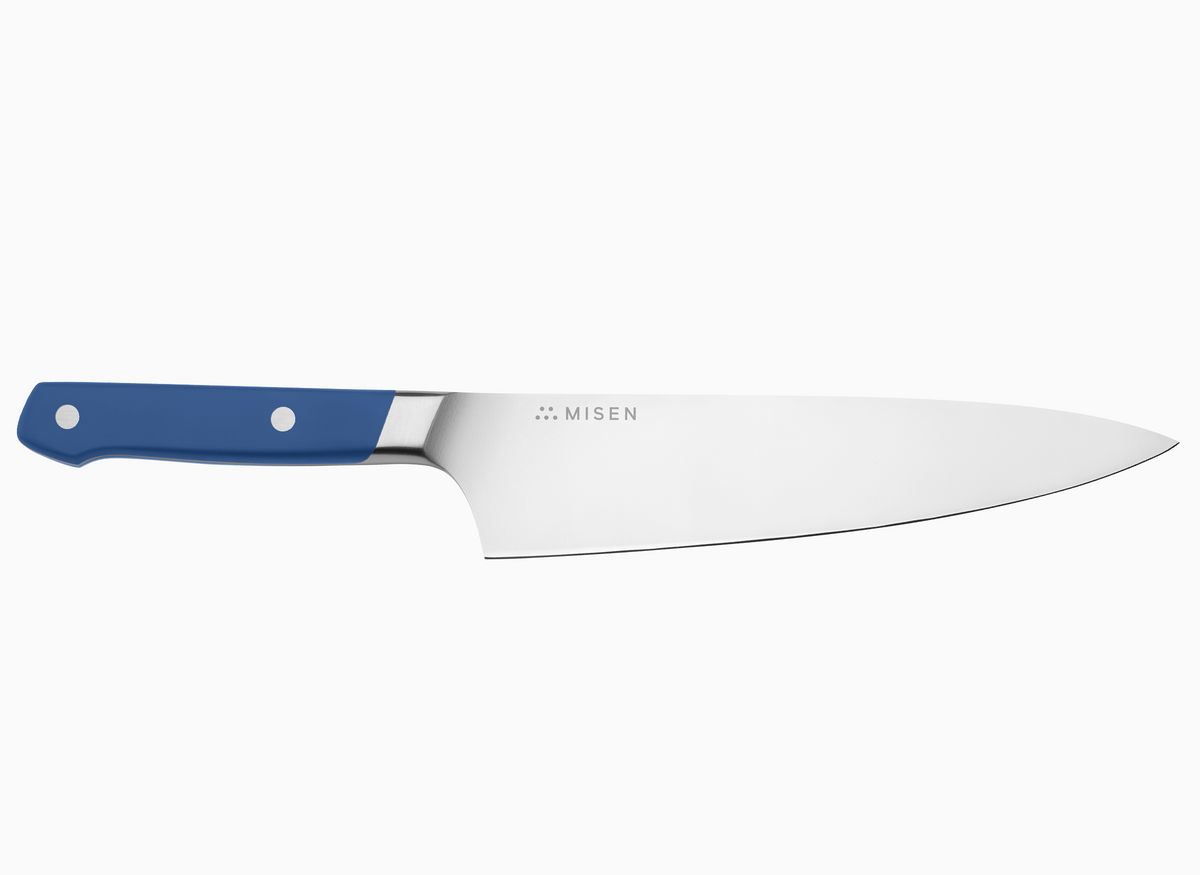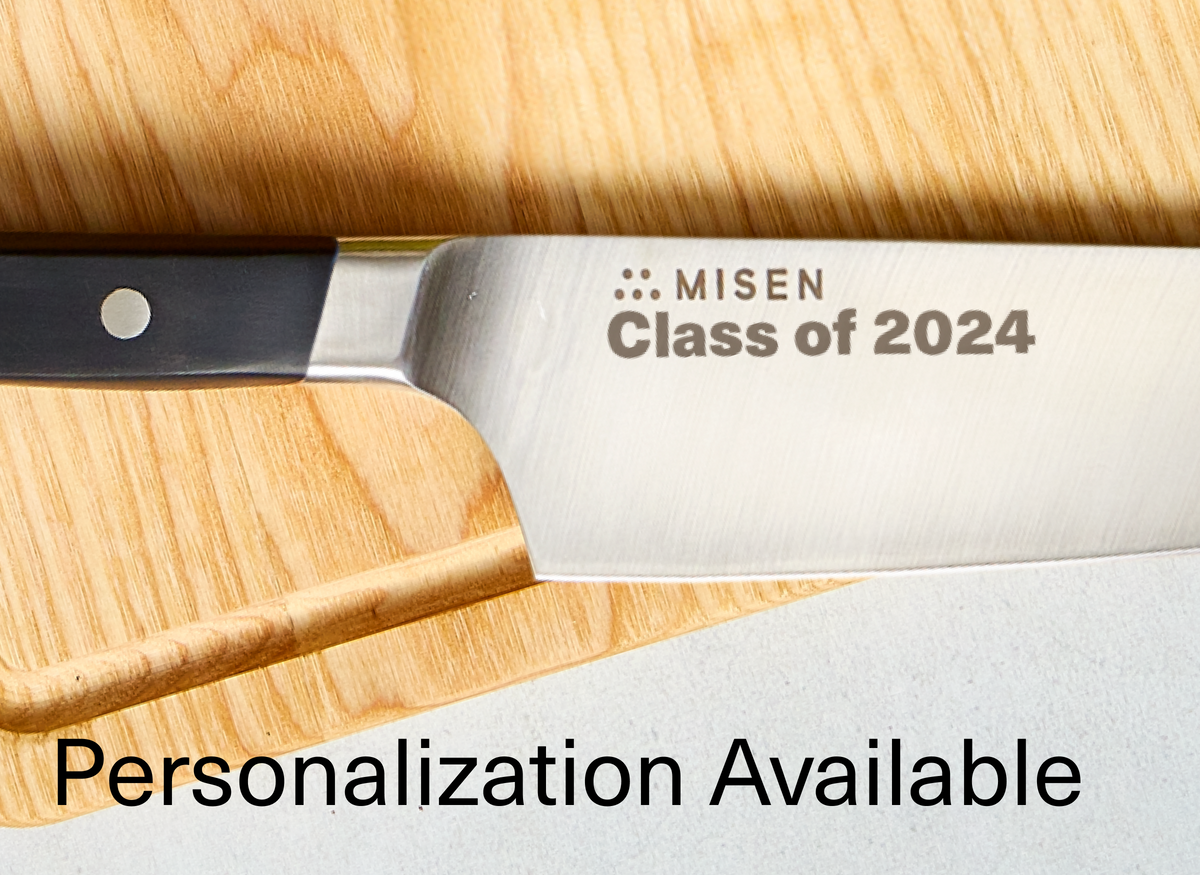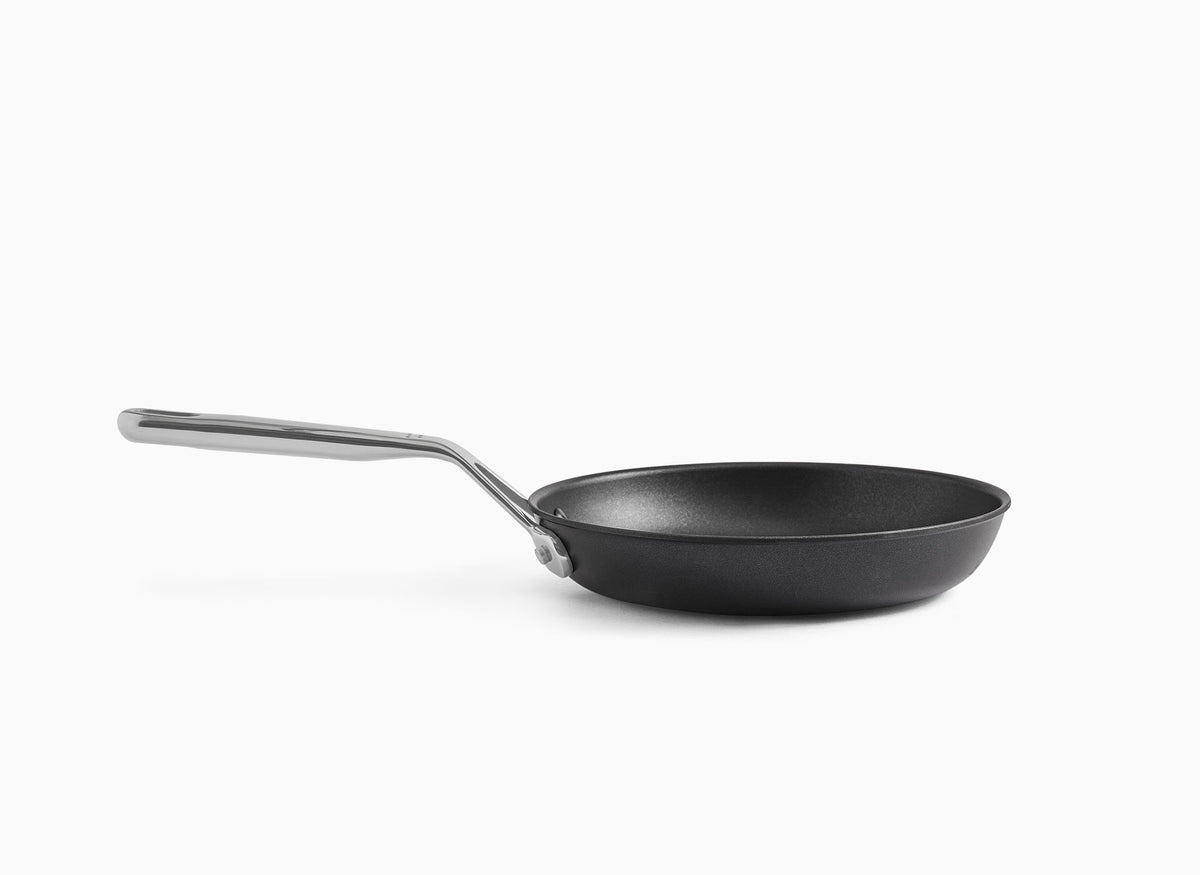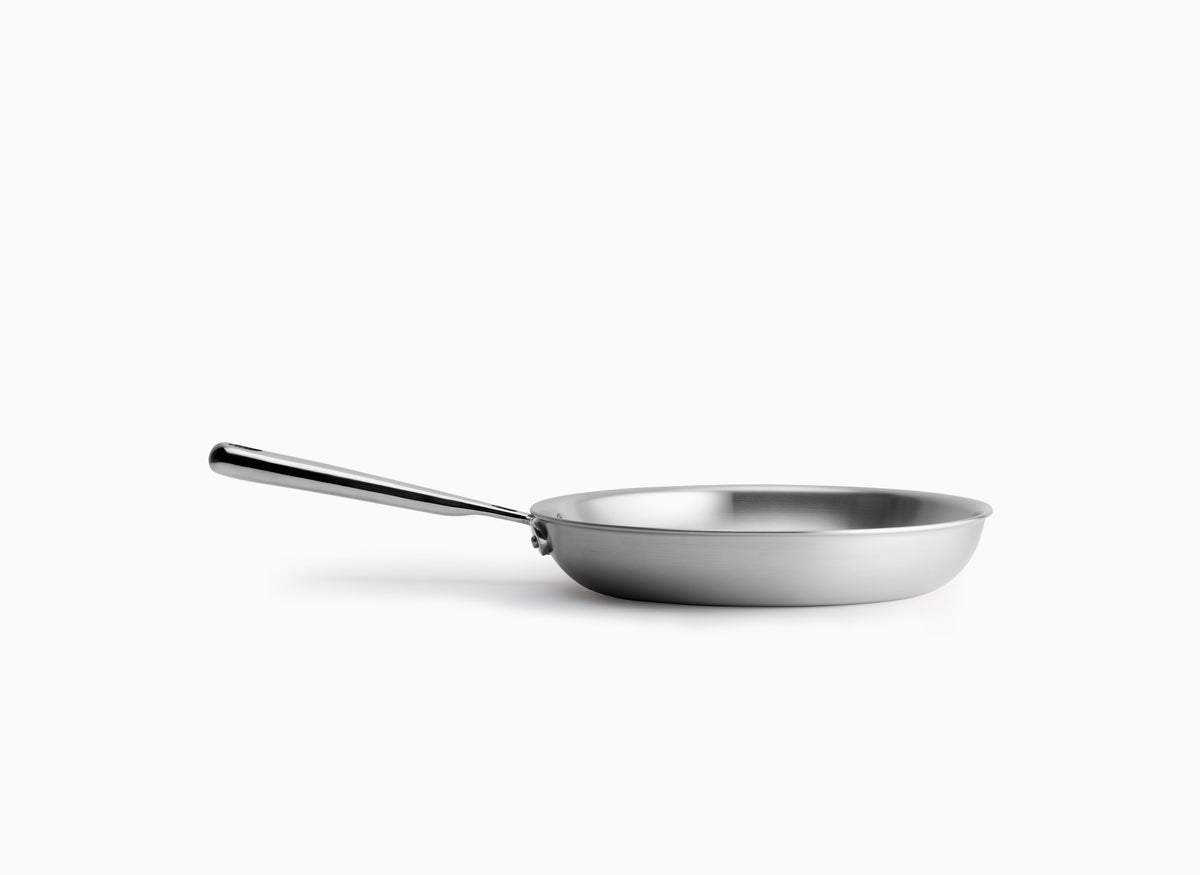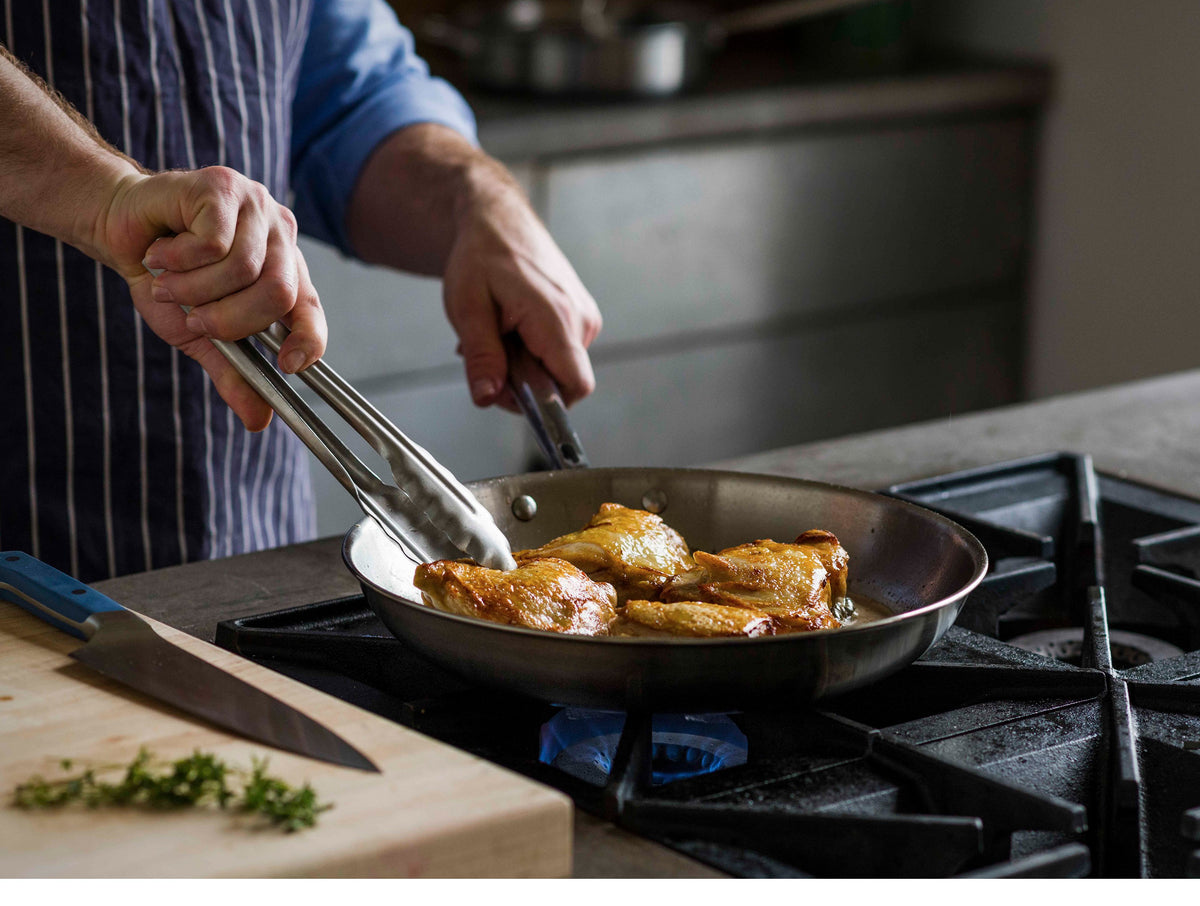The 7 Knife Cuts You Need in the Kitchen
 Finally understand what it means when a recipe calls for brunoise cut vegetables or chiffonade chard.
Finally understand what it means when a recipe calls for brunoise cut vegetables or chiffonade chard.
- Before making your first cut, it’s important to have a sharp knife and stable cutting board.
- Most knife cuts start by squaring off the ingredient, which results in a square or rectangular shape.
- A properly cut ingredient not only ensures an even cook time, it also results in a more professional, palatable dish.
So, you're getting to know your new set of kitchen knives and have already mastered the mince, dice, and even the julienne. Feel like you're ready to take things to the next level?
There’s a whole world of different knife cuts out there. From a chiffonade and a crinkle cut to a batonnet and a brunoise cut, having a knowledge of knife cuts will do wonders when you’re in the kitchen.
The Basics of Cutting
To cut anything well, you need a sharp knife and a reliable cutting board. A high-quality chef’s knife or santoku knife will be able to handle the majority of knife cuts. Just make sure to always cut with a sharp knife — not only will this make cutting easier and quicker, it’s also much safer. There’s a tendency to use force when working with a dull knife, which actually makes them more dangerous than a well-sharpened blade.
A sturdy work surface is also important, especially if you’re cutting several ingredients. Opt for a large wooden cutting board — the largest you can fit on your counter if possible — that is secure and stable. If you find the board you’re using to be a little wobbly or feel it has the tendency to slip, place a damp paper or cloth towel between the board and the counter.
Starting From Square One
The basic idea behind cutting is to get ingredients of all different shapes and sizes into one uniform cut. And the best way to do this is to start by squaring things off. Think about it — if you want to remove the odd-shaped ends of an ingredient, the easiest way to do so is by slicing straight through each side.
Now when referring to knife cuts, “squaring off” doesn’t necessarily mean just a cubed square. It can also be a rectangle or any straight-sided segments. So whether you’re preparing a turnip, a potato, or even an oddly shaped carrot or bell pepper — all these can be squared off. To square off an ingredient, start by peeling off any skin using a peeler or paring knife. Then, trim off the ends and slice off the four sides to form a rectangular shape.
Most knife cuts can be grouped into pairs. The first is a strip cut, which gets the ingredient into strip form (i.e., julienne, batonnet, baton). This cut already removes most of the waste and is often used for ingredients in salads or side dishes. The next cut is a cube cut, which takes the strip cut ingredient and applies one more series of slices, resulting in a cube (i.e., a small to large dice or brunoise).
All this squaring off does leave a lot of scraps behind. Rather than sweeping them into the waste bin, however, save them to make a delicious stock, soup, pureed dip, or juice.
The Baton Cut
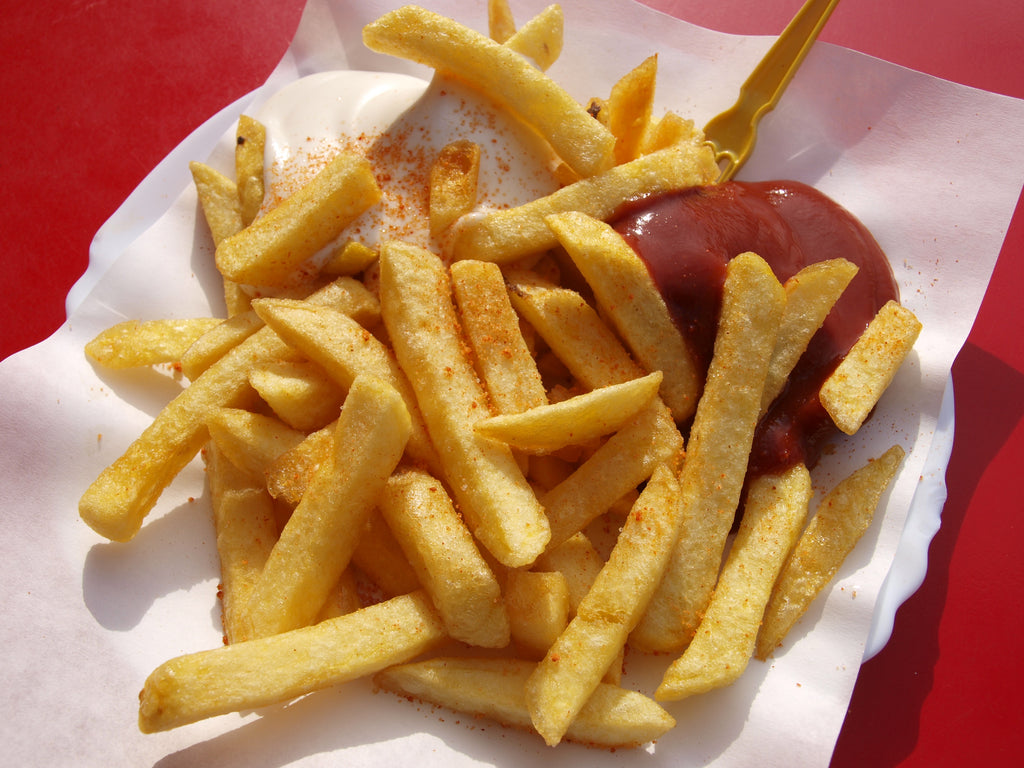 One of the largest of the knife cuts, the baton cut is perfect for thick-cut french fries.
One of the largest of the knife cuts, the baton cut is perfect for thick-cut french fries.
The baton is the largest of the stick cuts, with a standard dimension of 2 inches by a 1/2 inch by a 1/2 inch. Although not too common in main dishes, it’s useful for appetizers and side dishes. To make a baton, start by squaring off the ingredient and dividing it into 2-inch segments. Take each segment and slice it into 1/2-inch thick planks. Then, take these planks and slice them again by 1/2-inch until you have a pile of batons.
Best for: thick-cut french fries, garnishes
Best knife to use: chef’s knife or santoku knife
The Large Dice or Carré
Large dice or carré (which is French for “square”) are the largest of the cube cuts, with their six sides being between 3/4 and 1/2 of an inch. This makes them best for ingredients with a naturally larger girth, such as meat and potatoes. Start from a baton cut, and slice each segment further into equal 1/2-inch or 3/4-inch cubes. Given their significant size, large dice cuts tend to leave more waste compared to smaller dice sizes, and the ingredients require a longer time to cook through.
Best for: pot pies, roasted vegetables, long-cooking dishes
Best knife to use: chef’s knife
The Batonnet Cut
Batonnets are a perfect stick-size cut. At 1/4 inch by 1/4 inch by 2 inches, they’re the size of the average vegetable stick or skinny french fry. To make a batonnet cut, first square off your ingredient and divide it into 2-inch segments. Then, take each segment and slice it lengthwise into 1/4-inch planks. And finally, take each plank and slice it again into 1/4-inch sticks.
Best for: french fries, veggie sticks or crudités, vegetable tempura
Best knife to use: chef’s knife or santoku knife
The Medium Dice or Small Dice
This is your average dice size, with all sides typically ranging from 1/2 to 1/4 of an inch. This cut is accomplished by starting from a batonnet, and adding the additional step of slicing each stick crosswise to create equal-sized cubes.
Best for: chunky stews, chowders, soups
Best knife to use: chef’s knife or utility knife
The Julienne or Matchstick Cut (or Allumette)
This is a cut that sounds complicated but is actually quite common. Stick-shaped and very thin, a julienne cut usually measures 2 inches lengthwise and anywhere between 1/8 inch and 1/16 inch crosswise. After squaring off an ingredient, divide it into 2-inch long segments. Slice each segment lengthwise at a thickness of 1/8 inch or 1/16 inch, creating a pile of rectangular sheets. Take each sheet and slice it again into sticks of the same thickness.
Best for: garnishes, stir-fries, and other quick-cooking dishes
Best knife to use: chef’s knife or santoku knife
The Fine Dice or Brunoise
 A fine dice is the smallest uniform cut, which makes it perfect for a chunky soup or complement to ground meat.
A fine dice is the smallest uniform cut, which makes it perfect for a chunky soup or complement to ground meat.
Fine dice or brunoise are the smallest of the dice, at anywhere between 1/8 inch to 1/16 inch per side. (The next smallest would already be considered a mince, which is different in that it’s a non-uniform knife cut.) Coming from your julienne cut ingredient, a fine dice adds the final step of cubing each julienne stick into either a 1/8-inch or 1/16-inch dice.
Best for: mixing with ground meat, minestrone, other soups
Best knife to use: chef’s knife
The Chiffonade Cut
The chiffonade is one knife cut that doesn’t require any squaring off. Meaning “little ribbons” in French, it’s a type of knife cut typically reserved for leafy vegetables or herbs. It sounds fancy, but it’s actually quite simple to do. Simply roll or stack the leaves into a tight bundle, and start slicing them crosswise into thin ribbons. Feel free to use your fingers to loosen the ribbons when you’re done.
Best for: flat leafy greens, garnishes, herbs for pasta
Best knife to use: chef’s knife or paring knife for smaller greens
The Purpose of Proper Knife Cuts
It may be easy to skip over all the steps needed to execute a good knife cut. After all, most of the ingredients end up cooked and mixed in with other ingredients anyway — who will even notice, right? On the contrary, a well-cut ingredient is the first step to a well-cooked dish.
Ingredients too large or too small (or worse, all different sizes) have different cooking times and can leave you with pieces that are either still raw or much too mushy. This gets more complicated with the more ingredients you add.
In addition to cooking, another reason to consider sharpening up your knife cuts is presentation. A dish with properly cut pieces not only appears more professional and aesthetically pleasing, it’s also more enjoyable to eat. A salad is easier to eat when the pieces can easily fit onto the tines of your fork, and a stew goes down much better when the ingredients are already in bite-sized pieces.
While creating uniform knife cuts may take some time and effort at first, it’s worth it to have an easier cooking experience and a more enjoyable eating experience.
Sharpen Your Knife Skills
Basic knife cuts are a practice in preparing uniform ingredients and the first step to making easy-to-cook, easy-to-eat dishes. Try a few basic knife cuts the next time you cook. While you may not use all of them on a regular basis, it still helps to have a good grasp of the different knife cuts at your disposal.
